-
 Bitcoin
Bitcoin $96,973.9779
3.07% -
 Ethereum
Ethereum $1,857.8764
4.87% -
 Tether USDt
Tether USDt $1.0005
0.04% -
 XRP
XRP $2.2386
3.53% -
 BNB
BNB $602.5033
0.90% -
 Solana
Solana $152.0649
6.14% -
 USDC
USDC $1.0001
0.00% -
 Dogecoin
Dogecoin $0.1823
6.91% -
 Cardano
Cardano $0.7074
4.47% -
 TRON
TRON $0.2468
0.58% -
 Sui
Sui $3.6947
8.65% -
 Chainlink
Chainlink $14.9192
5.71% -
 Avalanche
Avalanche $21.4575
2.94% -
 Stellar
Stellar $0.2776
2.94% -
 UNUS SED LEO
UNUS SED LEO $8.9563
-1.26% -
 Shiba Inu
Shiba Inu $0.0...01370
4.10% -
 Hedera
Hedera $0.1896
5.04% -
 Toncoin
Toncoin $3.1929
0.81% -
 Bitcoin Cash
Bitcoin Cash $366.0350
0.67% -
 Litecoin
Litecoin $88.8139
6.90% -
 Hyperliquid
Hyperliquid $20.1153
7.94% -
 Polkadot
Polkadot $4.1856
2.90% -
 Dai
Dai $1.0000
-0.01% -
 Bitget Token
Bitget Token $4.3966
1.71% -
 Monero
Monero $276.7705
1.03% -
 Ethena USDe
Ethena USDe $1.0005
0.07% -
 Pi
Pi $0.6091
5.99% -
 Pepe
Pepe $0.0...08875
1.15% -
 Aptos
Aptos $5.5388
4.31% -
 Uniswap
Uniswap $5.4035
3.35%
How to calculate the liquidation price of KuCoin contracts? How to warn of risks in advance?
KuCoin's liquidation price for futures and margin trading is crucial for risk management; it's calculated using entry price, leverage, position size, and maintenance margin rate.
May 01, 2025 at 10:57 pm
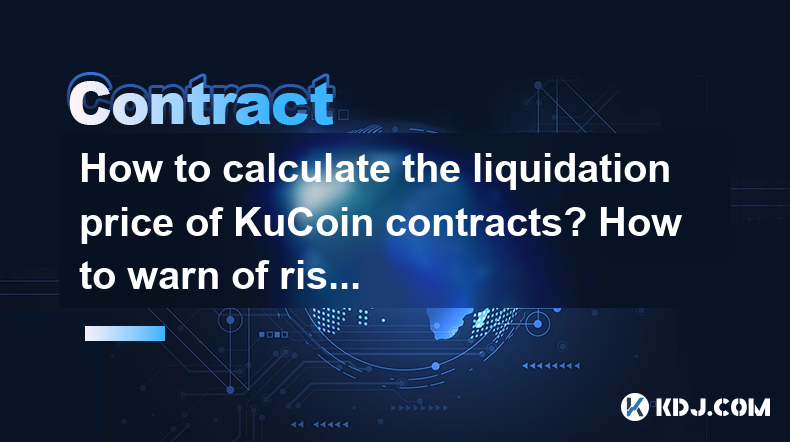
Understanding the Basics of KuCoin Contracts
When trading on KuCoin, understanding the concept of liquidation is crucial for managing risk effectively. Liquidation occurs when the value of your position moves against you to the point where your margin balance can no longer support the trade. KuCoin offers futures and margin trading, and both types of contracts have a liquidation price, which is the price at which your position will be automatically closed to prevent further losses.
To calculate the liquidation price of KuCoin contracts, you need to understand several key components: the entry price, the leverage used, the position size, and the maintenance margin rate. These elements work together to determine the point at which your position will be liquidated.
Calculating the Liquidation Price for Futures Contracts
For futures contracts on KuCoin, the liquidation price can be calculated using the following formula:
[ \text{Liquidation Price} = \frac{\text{Entry Price} \times (1 \pm \text{Maintenance Margin Rate}) \pm \text{Maintenance Margin Rate} \times \text{Entry Price}}{\text{Entry Price} \times (1 \pm \text{Maintenance Margin Rate}) \pm 1} ]
Where:
- Entry Price is the price at which you entered the position.
- Maintenance Margin Rate is the minimum amount of margin required to keep the position open.
- The ± sign depends on whether you are in a long or short position. For long positions, use -, and for short positions, use +.
Let's break this down with an example:
- Suppose you enter a long position on BTC/USDT futures at an entry price of $30,000 with a leverage of 10x. The maintenance margin rate for this contract is 0.5%.
Using the formula:
[ \text{Liquidation Price} = \frac{30,000 \times (1 - 0.005) - 0.005 \times 30,000}{30,000 \times (1 - 0.005) + 1} ]
[ \text{Liquidation Price} = \frac{30,000 \times 0.995 - 150}{30,000 \times 0.995 + 1} ]
[ \text{Liquidation Price} = \frac{29,850 - 150}{29,850 + 1} ]
[ \text{Liquidation Price} = \frac{29,700}{29,851} \approx 29,688.65 ]
So, the liquidation price for this long position would be approximately $29,688.65.
Calculating the Liquidation Price for Margin Trading
Margin trading on KuCoin involves borrowing funds to trade larger positions. The liquidation price for margin trading can be calculated using the following formula:
[ \text{Liquidation Price} = \frac{\text{Entry Price} \times (1 - \text{Maintenance Margin Rate})}{\text{Entry Price} \times (1 - \text{Maintenance Margin Rate}) + \text{Borrowed Amount}} ]
Where:
- Entry Price is the price at which you entered the position.
- Maintenance Margin Rate is the minimum amount of margin required to keep the position open.
- Borrowed Amount is the amount of funds borrowed to open the position.
Let's consider an example:
- You buy 1 BTC at an entry price of $30,000 with a margin of 2 BTC and a maintenance margin rate of 1%.
Using the formula:
[ \text{Liquidation Price} = \frac{30,000 \times (1 - 0.01)}{30,000 \times (1 - 0.01) + 30,000} ]
[ \text{Liquidation Price} = \frac{30,000 \times 0.99}{30,000 \times 0.99 + 30,000} ]
[ \text{Liquidation Price} = \frac{29,700}{29,700 + 30,000} ]
[ \text{Liquidation Price} = \frac{29,700}{59,700} \approx 24,958.12 ]
So, the liquidation price for this margin position would be approximately $24,958.12.
Using KuCoin's Platform to Calculate Liquidation Price
KuCoin provides tools within its platform to help traders calculate the liquidation price. Here's how you can do it:
- Log in to your KuCoin account.
- Navigate to the Futures or Margin trading section.
- Select the contract you want to trade.
- Enter your desired position size, leverage, and entry price.
- The platform will display the estimated liquidation price based on these inputs.
This feature is particularly useful as it takes into account real-time market conditions and any changes to the maintenance margin rate.
Setting Up Risk Alerts on KuCoin
To manage risks effectively, setting up alerts on KuCoin can help you stay informed about potential liquidation scenarios. Here's how to set up risk alerts:
- Log in to your KuCoin account.
- Navigate to the Futures or Margin trading section.
- Select the contract you want to monitor.
- Click on the 'Alerts' tab.
- Set up price alerts near your calculated liquidation price. You can choose to receive notifications via email, SMS, or in-app notifications.
- Set up margin ratio alerts to be notified when your margin ratio approaches the maintenance margin rate.
By setting up these alerts, you can take timely action to adjust your positions or add more margin to prevent liquidation.
Monitoring Market Conditions and Adjusting Positions
To further mitigate the risk of liquidation, it's important to continuously monitor market conditions and adjust your positions accordingly. Here are some strategies:
- Regularly check the market trends and news that may affect the price of the assets you are trading.
- Use stop-loss orders to automatically close your position if the price moves against you to a certain level.
- Adjust your leverage based on market volatility. Lower leverage can provide more buffer against liquidation.
- Add more margin to your position if the market moves against you and your margin ratio approaches the maintenance margin rate.
These proactive measures can help you manage your risk and avoid unexpected liquidations.
Frequently Asked Questions
Q: Can the liquidation price change after I open a position?
A: Yes, the liquidation price can change if the maintenance margin rate changes or if you adjust your position size or leverage. Always keep an eye on these factors and recalculate your liquidation price accordingly.
Q: What happens if I am liquidated on KuCoin?
A: If your position is liquidated, KuCoin will automatically close your position to prevent further losses. Any remaining funds in your account after covering the losses will be available for withdrawal or further trading.
Q: How can I avoid liquidation on KuCoin?
A: To avoid liquidation, you can use stop-loss orders, monitor your positions closely, adjust your leverage, and add more margin if necessary. Setting up alerts can also help you take timely action to prevent liquidation.
Q: Is there a way to recover funds after liquidation?
A: Once a position is liquidated, the funds used to cover the losses are not recoverable. However, any remaining funds in your account can be used for future trading or withdrawn. It's crucial to manage your risk carefully to minimize the chance of liquidation.
Disclaimer:info@kdj.com
The information provided is not trading advice. kdj.com does not assume any responsibility for any investments made based on the information provided in this article. Cryptocurrencies are highly volatile and it is highly recommended that you invest with caution after thorough research!
If you believe that the content used on this website infringes your copyright, please contact us immediately (info@kdj.com) and we will delete it promptly.
- The crypto market is rising, and several altcoins are positioning themselves
- 2025-05-02 01:25:12
- Dinari, a tokenisation startup that allows non-U.S. investors to buy shares of U.S. companies has raised $12.7 million
- 2025-05-02 01:25:12
- DOGE, the most well-known meme coin, has been in the spotlight for over a decade with its unpredictable price swings
- 2025-05-02 01:20:12
- Western Distributing Transportation Corporation 18-wheeler rolls over, spilling cash
- 2025-05-02 01:20:12
- Troller Cat (TCAT) Whitelist Closes Soon, Promising 10,000% Returns
- 2025-05-02 01:15:12
- Final Shot at Jaw-Dropping Payoffs: Arctic Pablo's $0.10 Milestone Sparks Explosive Returns as Pepe and WHY Coin Hold Firm
- 2025-05-02 01:15:12
Related knowledge
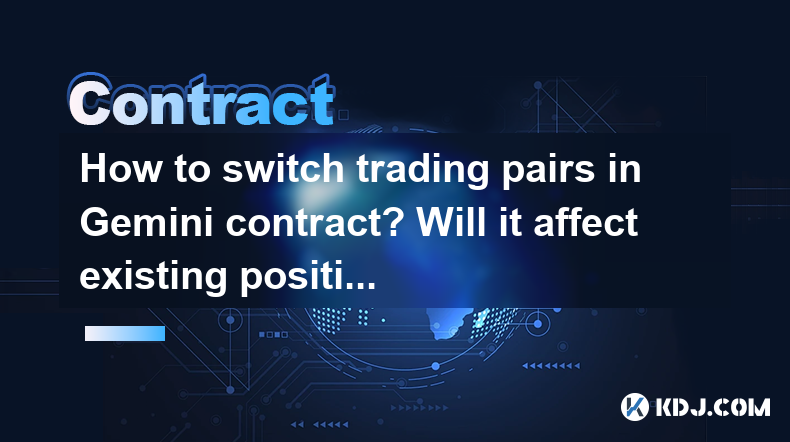
How to switch trading pairs in Gemini contract? Will it affect existing positions?
May 02,2025 at 01:43am
Switching trading pairs in the Gemini contract can be a crucial aspect of managing your cryptocurrency portfolio. This guide will walk you through the process of switching trading pairs and discuss whether this action will affect your existing positions. Understanding these elements is essential for effective trading on the Gemini platform. Understandin...
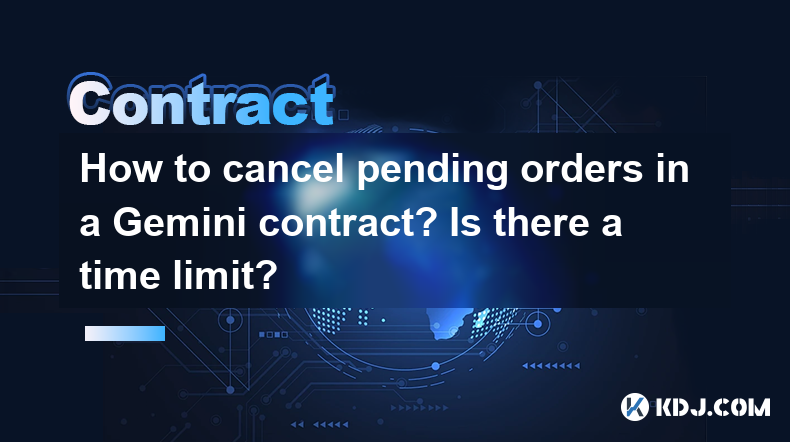
How to cancel pending orders in a Gemini contract? Is there a time limit?
May 01,2025 at 11:14pm
When managing your cryptocurrency trades on Gemini, understanding how to handle pending orders, especially within the Gemini contract framework, is crucial. Pending orders are those that have been placed but not yet executed. If you find yourself needing to cancel these orders, Gemini provides a straightforward process to do so. Additionally, knowing wh...
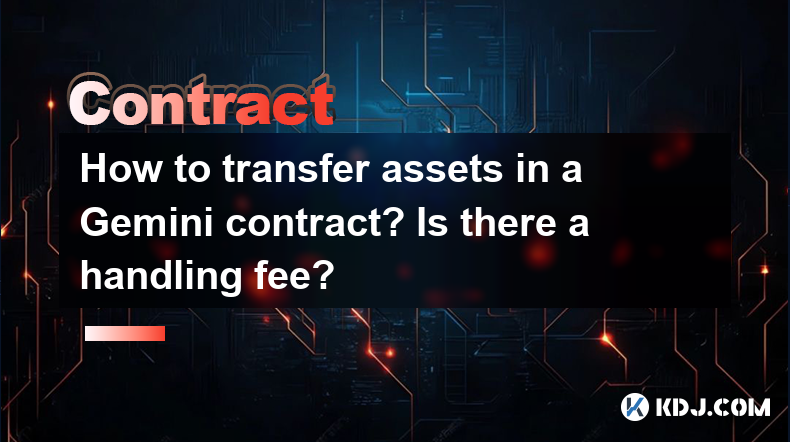
How to transfer assets in a Gemini contract? Is there a handling fee?
May 02,2025 at 12:36am
Transferring assets within a Gemini contract involves a straightforward process that ensures the secure movement of your cryptocurrencies. Whether you're moving funds between your own accounts or sending them to another user, understanding the steps and potential fees is crucial. Let's delve into the details of how to transfer assets in a Gemini contrac...
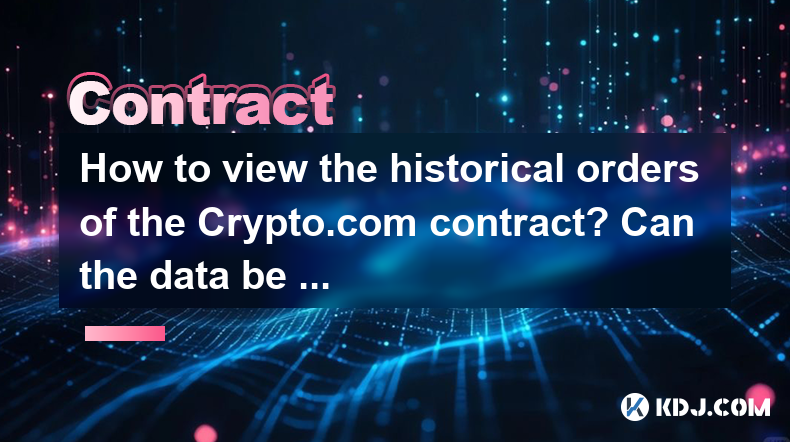
How to view the historical orders of the Crypto.com contract? Can the data be exported for analysis?
May 01,2025 at 11:28pm
Introduction to Viewing Historical Orders on Crypto.comCrypto.com offers a wide array of trading options, including futures and perpetual contracts. For traders, understanding and analyzing past trades is crucial for improving strategies and performance. In this article, we will guide you through the process of viewing your historical orders on Crypto.c...
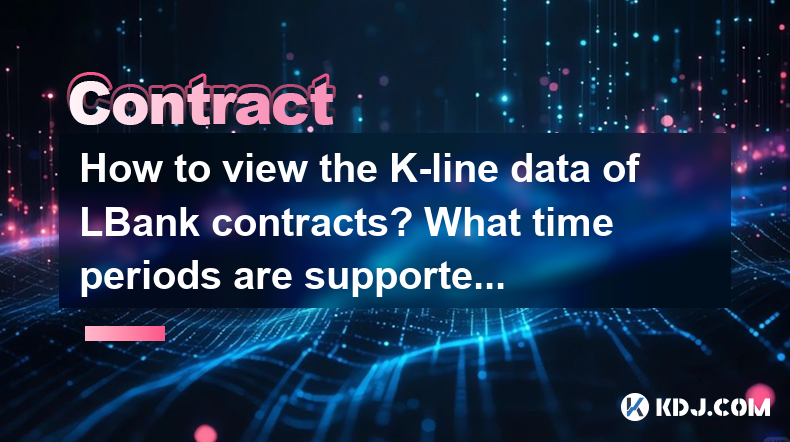
How to view the K-line data of LBank contracts? What time periods are supported?
May 01,2025 at 09:00pm
To view the K-line data of LBank contracts and understand the supported time periods, follow this detailed guide. LBank, as a prominent cryptocurrency exchange, provides various tools and features to help traders analyze market trends and make informed decisions. The K-line chart, also known as a candlestick chart, is a vital tool for technical analysis...
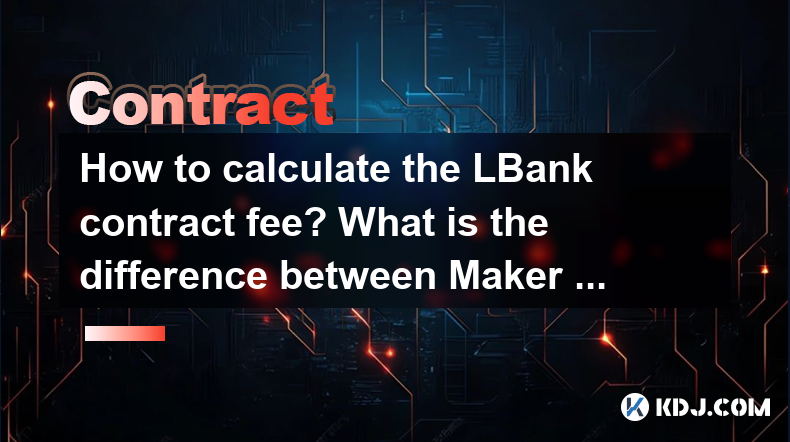
How to calculate the LBank contract fee? What is the difference between Maker and Taker rates?
May 02,2025 at 01:49am
Calculating the LBank contract fee and understanding the difference between Maker and Taker rates are essential for anyone trading on the LBank platform. This article will guide you through the process of calculating the contract fee and explain the distinctions between Maker and Taker rates, ensuring you have a comprehensive understanding of these conc...

How to switch trading pairs in Gemini contract? Will it affect existing positions?
May 02,2025 at 01:43am
Switching trading pairs in the Gemini contract can be a crucial aspect of managing your cryptocurrency portfolio. This guide will walk you through the process of switching trading pairs and discuss whether this action will affect your existing positions. Understanding these elements is essential for effective trading on the Gemini platform. Understandin...

How to cancel pending orders in a Gemini contract? Is there a time limit?
May 01,2025 at 11:14pm
When managing your cryptocurrency trades on Gemini, understanding how to handle pending orders, especially within the Gemini contract framework, is crucial. Pending orders are those that have been placed but not yet executed. If you find yourself needing to cancel these orders, Gemini provides a straightforward process to do so. Additionally, knowing wh...

How to transfer assets in a Gemini contract? Is there a handling fee?
May 02,2025 at 12:36am
Transferring assets within a Gemini contract involves a straightforward process that ensures the secure movement of your cryptocurrencies. Whether you're moving funds between your own accounts or sending them to another user, understanding the steps and potential fees is crucial. Let's delve into the details of how to transfer assets in a Gemini contrac...

How to view the historical orders of the Crypto.com contract? Can the data be exported for analysis?
May 01,2025 at 11:28pm
Introduction to Viewing Historical Orders on Crypto.comCrypto.com offers a wide array of trading options, including futures and perpetual contracts. For traders, understanding and analyzing past trades is crucial for improving strategies and performance. In this article, we will guide you through the process of viewing your historical orders on Crypto.c...

How to view the K-line data of LBank contracts? What time periods are supported?
May 01,2025 at 09:00pm
To view the K-line data of LBank contracts and understand the supported time periods, follow this detailed guide. LBank, as a prominent cryptocurrency exchange, provides various tools and features to help traders analyze market trends and make informed decisions. The K-line chart, also known as a candlestick chart, is a vital tool for technical analysis...

How to calculate the LBank contract fee? What is the difference between Maker and Taker rates?
May 02,2025 at 01:49am
Calculating the LBank contract fee and understanding the difference between Maker and Taker rates are essential for anyone trading on the LBank platform. This article will guide you through the process of calculating the contract fee and explain the distinctions between Maker and Taker rates, ensuring you have a comprehensive understanding of these conc...
See all articles





















![[Geometry Dash] VAST by AdrianArtistry (2nd update on first coin) [Geometry Dash] VAST by AdrianArtistry (2nd update on first coin)](/uploads/2025/05/01/cryptocurrencies-news/videos/geometry-dash-vast-adrianartistry-nd-update-coin/image-1.webp)































































